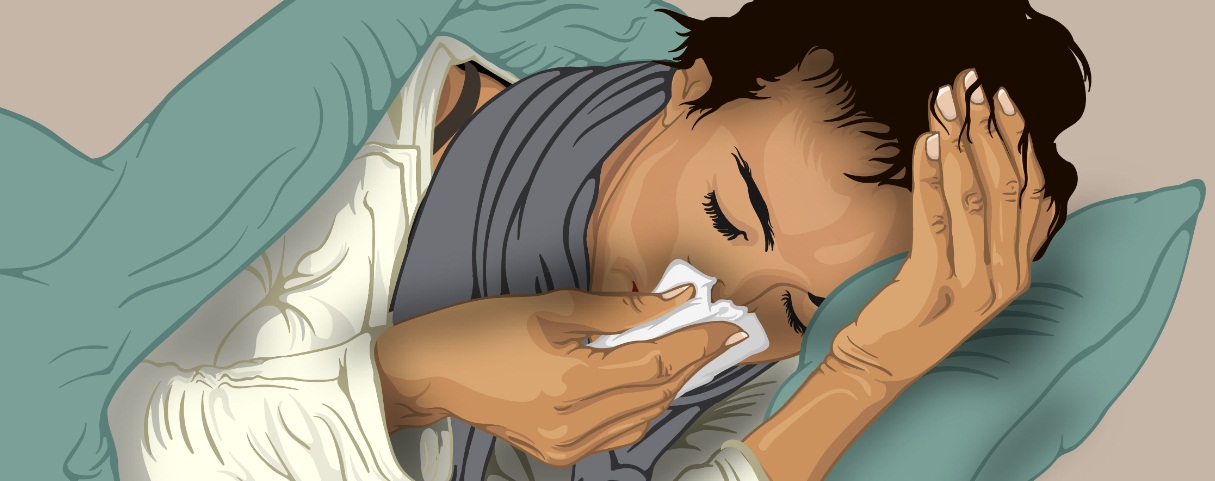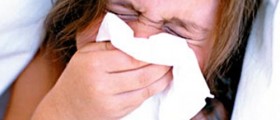Understanding Common Cold
The common cold is a viral infection of our upper respiratory system, mainly manifesting through coughing, sore throat, hoarseness, and several other symptoms. However, once you start being troubled by these symptoms, the virus has already finished its incubation period, and there are signs of a cold in progress long before it hits us.
Many of us, upon suffering from the symptoms of a common cold, rush to our medicine chests and take all we can find, swallowing many different medications and hoping all will do their job. This is the wrong way of reacting to this condition.

Being a viral infection, a cold will last until the virus runs its course and disappears. Thus, all you need to do is make the symptoms less prominent. To do this, you need to know what you are dealing with before taking pills that may cause side effects or be counter-productive. So, read on, and follow these safe and best steps towards getting rid of the common cold symptoms quickly and effectively.
- Colds are common because some of the causative viruses do not produce lasting immunity after infection and some viruses have numerous serotypes. Cold viruses that do not produce lasting immunity include respiratory syncytial virus (RSV), parainfluenza viruses (PIVs), and human coronaviruses (HCoVs). Cold viruses that have numerous serotypes but produce lasting serotype-specific immunity after infection include rhinoviruses, adenoviruses, influenza viruses, and enteroviruses.
- With at least 100 serotypes, rhinoviruses are the most common cause of URIs in children and adults. At least 50% of colds in adults are caused by rhinoviruses. Other viruses that cause URIs are HCoVs, RSV, human metapneumovirus, influenza virus, parainfluenza viruses, adenoviruses, echoviruses, and coxsackieviruses A and B. Human bocavirus (HBoV), discovered in 2005, has been reported in children with symptomatic URIs (>10%) but may also occur in asymptomatic children, making its role in causing illness unclear.
- Some viruses cause characteristic syndromes. For example, RSV causes bronchiolitis in children 2 years or younger, influenza viruses cause febrile respiratory illness with severe lower respiratory tract involvement, adenoviruses cause pharyngoconjunctival fever, parainfluenza viruses cause croup in young children, HBoV is associated with wheezing, and enteroviruses cause a variety of illnesses, including aseptic meningitis and herpangina.
- The frequency of colds varies with age. A 10-year study in the 1970s of families with children who did not attend a childcare facility showed that the peak incidence of colds occurs in preschool children 1 to 5 years old, with a frequency of 7.4 to 8.3 colds per year. In a 52-week longitudinal study of 108 individuals in 26 households in Utah, which included diaries of illness and testing of weekly self-collected or family-collected anterior nares specimens by FilmArray, an automated polymerase chain reaction (PCR) system for virus detection, respiratory symptoms were identified for 38% of person-weeks for children younger than 5 years and 20% for older children and adults. Sixty percent of respiratory illnesses were associated with virus detection, but only approximately 50% of virus detections were associated with symptoms (especially rhinovirus and bocavirus).
- Symptoms of the common cold do not vary by specific causative virus. In older children and adults, rhinorrhea, nasal obstruction, and sore or scratchy throat are typical. The rhinorrhea is initially clear but may become colored as the illness proceeds, and patients can cough or sneeze. Fever (>38°C) is uncommon in adults. Other symptoms are malaise, sinus fullness, and hoarseness. Objective findings are minimal except for mild erythema of the nasal mucosa or pharynx. Symptoms resolve in 5 to 7 days.
- The common cold usually resolves in about 10 to 14 days in infants and children. New-onset fever and earache during this period may herald the development of bacterial otitis media, which occurs in about 5% of colds in preschool children. Persistence of nasal symptoms for longer than 10 days was thought to signify the development of a secondary bacterial sinusitis, but a study found that 20 children hospitalized for preseptal or orbital cellulitis, indicative of bacterial sinusitis, had symptoms of acute respiratory tract infection for 7 or fewer days before hospitalization, suggesting that the complications of rhinosinusitis can occur during the first few days of a cold.
What Can You Do?
First, once you experience the well-known fatigue and lack of strength, give yourself a rest and skip work for a couple of days to recuperate. You do not need to become bedridden, you just need to sleep enough, eat well, and reduce your physical straining. The same goes for your child. If it shows signs of a cold, keep it at home, and limit its physical activities for a couple of days.
Know that the lack of appetite you are feeling is one of the main signs of a cold. Thus, make sure you eat well, regardless of the absence of hunger you are experiencing. Also, increase your fluid intake, since you need these to fight off infections, keep your blood flowing fast, and remove the excessive mucus which is pestering you.
For these purposes, fruit juices are the best option. Just make sure they are not cold. Avoid milk during this period since it can be of little help. Another drink to avoid is an alcoholic one, especially if you are on any medication.
Do not forget that all beverages you take should be healthy and warm since any cold ones are bound to slow down your mucus disappearance.
Thus, since you cannot stop the virus, the best thing is to endure it smartly and carefully following the above-mentioned tips.
- www.nhs.uk/conditions/common-cold/
- www.cdc.gov/flu/symptoms/coldflu.htm
- Photo courtesy of https://www.myupchar.com/en via Wikimedia Commons: commons.wikimedia.org/wiki/File:A_lady_suffering_from_the_Common_Cold.png

















Your thoughts on this
Loading...